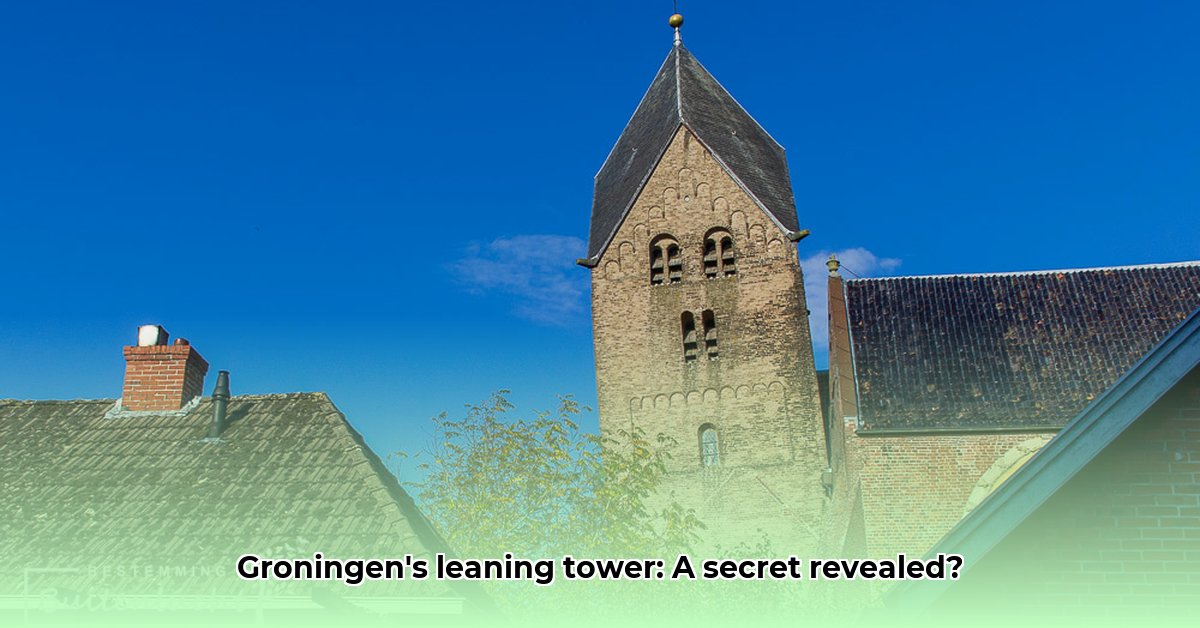
Scheve Kerktoren Groningen: A Wonky Wonder of the Netherlands
Hey there, lekker! Ever heard of the Leaning Tower of Pisa? Famous, right? Well, hold onto your koppie, because the Netherlands has its own collection of delightfully wonky church towers! While Pisa's tower hogs the global spotlight, several Dutch steeples, including Groningen's Scheve Kerktoren (Groningen's leaning tower), are giving it a run for its money (or rather, its lean!). We're not talking a slight tilt; these are serious slants! Think of Bedum's Walfridus Church tower, and others scattered across Friesland – they're all contenders in this quirky competition, a testament to the ingenuity (or sometimes, the lek!) of past building methods. It's a fascinating glimpse into Dutch history and the unique challenges of building on less-than-ideal foundations.
Building on a Wobbly Foundation: Why the Lean?
So, what causes these towers to lean? The answer often lies underground. Many historical structures were built on, shall we say, problematic foundations. Unstable soil, the kind that shifts and settles over time, is a major culprit. And here's a crazy fact: some old towers were even built on animal hides! Can you imagine? Trying to construct a tall, heavy tower on a base of… animal hides! The results were, let’s say, unpredictable. This lack of sophisticated soil mechanics knowledge in the past played a huge role. The Scheve Kerktoren Groningen's lean likely has its own unique story, a tale yet to be fully unravelled.
Leaning Tower Face-Off: A Tilt-tastic Comparison
Let's meet the contenders in this leaning tower showdown! Bedum's tower boasts a respectable 4.2-degree lean. Miedem’s tower, although shorter, shows off a more impressive 4.72-degree lean. Then there's Leeuwarden's Oldehove, a serious heavyweight, leaning at approximately 4.21 degrees. But how do we declare a winner? It's not just about the angle; the tower's height plays a crucial role. A shorter tower with a larger lean might not look as dramatic as a taller one with a smaller lean. It's a complex competition, nee?
Scheve Kerktoren Groningen: Its Place in History
The Scheve Kerktoren Groningen's inclusion in this leaning tower saga highlights a broader Dutch phenomenon. Each tower possesses its own historical context, enriching the narrative. Bedum's lean, for instance, developed gradually over centuries, unlike Oldehove's more sudden tilt during construction. This offers a unique insight into past building techniques and the challenges faced by builders. The variations in lean provide valuable information about construction methods used in different regions.
Tourism and the Tilted Titans: A Cultural Angle
The disparity in tourism appeal is fascinating. Pisa's tower is a global icon, drawing millions. The Dutch leaning towers, however, despite their impressiveness, receive far less international attention. This raises questions about how we value history and the cultural significance we attach to landmarks. Perhaps the Dutch leaning towers deserve a higher profile? A "Leaning Tower Trail" could boost tourism!
The Future of Our Wobbling Wonders
Preserving these historical gems requires a collaborative effort, including ongoing monitoring, structural assessments, and investment in preservation. Improved access and signage would enhance visitor experience. Saving these structures isn't simply about bricks and mortar; it's about preserving a piece of Dutch history. Experts emphasize that continued research and careful monitoring are vital to safeguarding these architectural wonders, enabling us to better understand their past and secure their future. Ongoing studies may unveil further insights into construction techniques and geographical conditions.
Three Pivotal Points about Leaning Towers in the Netherlands:
- The lean of these towers is often attributable to unstable foundations and outdated building techniques.
- Direct comparison of lean requires considering both the angle of the lean and the height of the tower.
- Preservation efforts require ongoing monitoring, research, and investment to ensure the longevity of these historical structures.